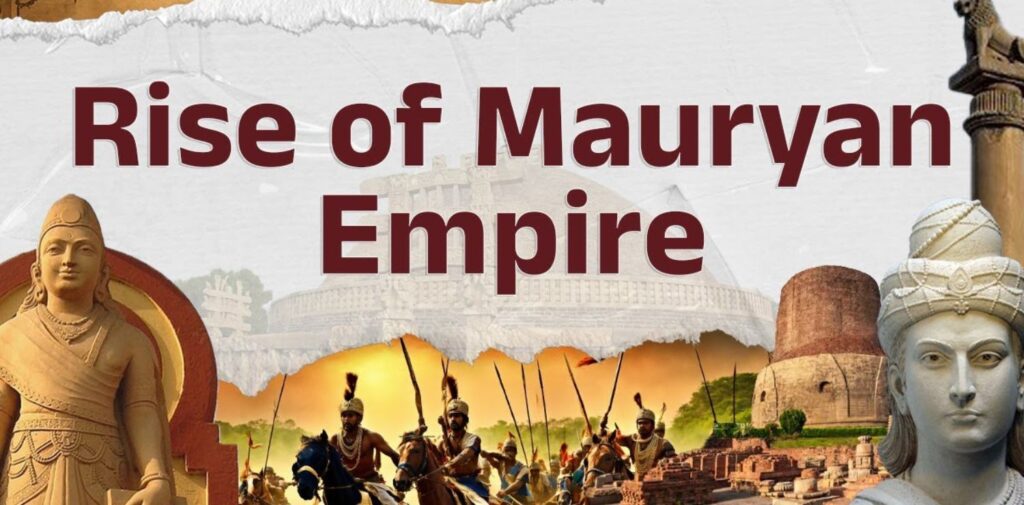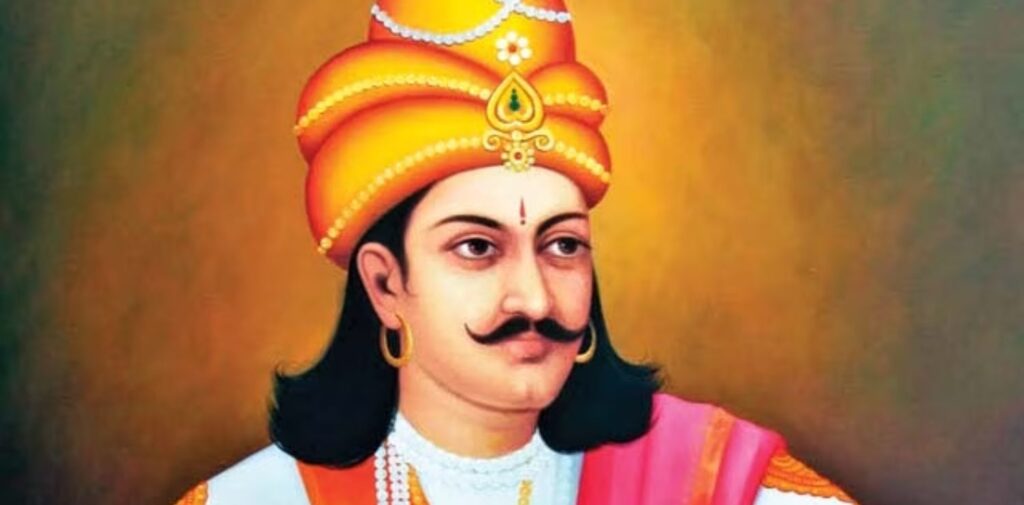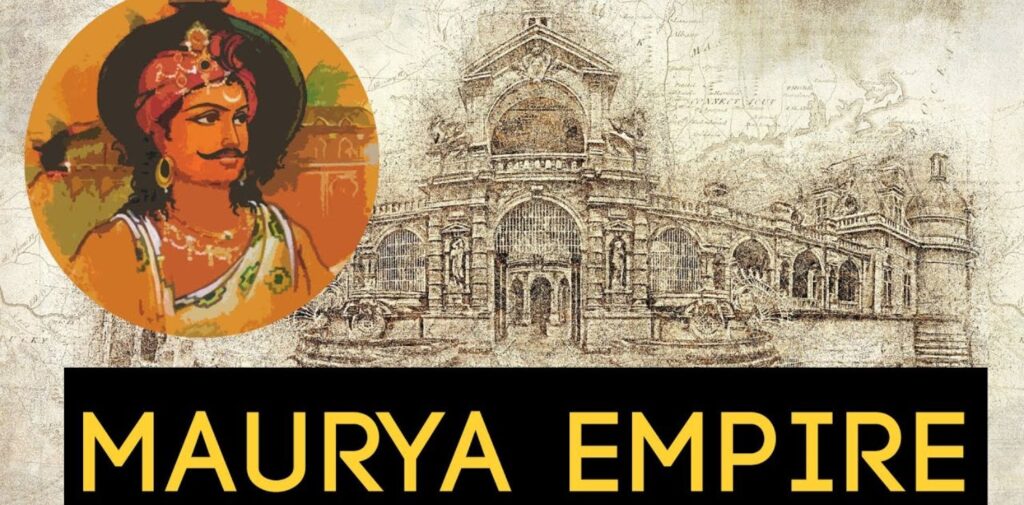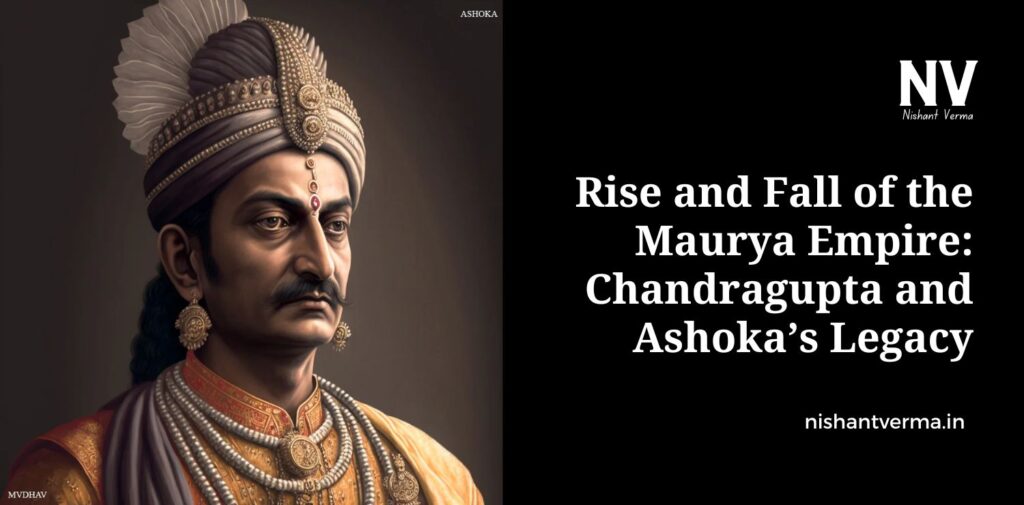The Maurya Empire was one of the greatest empires in the history of India. It was powerful, large, and influential, and its rulers left a strong impact on Indian history. The story of the Maurya Empire is fascinating, full of triumphs and challenges, especially the stories of its two most famous rulers: Chandragupta Maurya and Ashoka the Great. This article will explain the rise and fall of the Maurya Empire in a simple and easy way, so that even young readers can understand it clearly.
What Was the Maurya Empire?
The Maurya Empire was an ancient empire in India that lasted from around 322 BCE to 185 BCE. It was one of the largest and most powerful empires in Indian history. The empire spread over a vast area, covering most of the Indian subcontinent, including present-day India, Pakistan, Nepal, and Afghanistan.
The Maurya Empire is most famous for its great rulers, such as Chandragupta Maurya and Ashoka. These leaders shaped the empire’s growth and decline and left a legacy that is remembered even today.

The Rise of the Maurya Empire
Chandragupta Maurya: The Founder
The story of the Maurya Empire began with a man named Chandragupta Maurya. Chandragupta was born in a small village in India and came from a humble background. However, he was a very intelligent and ambitious person. Chandragupta’s rise to power is quite remarkable. He was guided by a wise teacher named Chanakya, also known as Kautilya, who helped him develop his leadership skills and build a strong army.
Together, Chandragupta and Chanakya set out to overthrow the Nanda Dynasty, which ruled the region at the time. After many battles, they successfully took control and founded the Maurya Empire in 322 BCE. Chandragupta became the first emperor of the Maurya Empire, and his reign marked the beginning of an era of great change in India.
Expansion of the Empire
Under Chandragupta’s rule, the Maurya Empire expanded rapidly. He defeated many rival kingdoms and brought them under his control. Chandragupta also made alliances with other powerful kingdoms, including the Greek rulers who controlled parts of northwestern India.
Chandragupta’s success in building such a large empire was due to his strong leadership and military strategies. He also established a well-organized government to manage the empire. The empire was divided into provinces, each ruled by a governor. This helped keep the vast empire under control and allowed for smooth administration.
Chandragupta ruled for many years and was able to create a strong foundation for the Maurya Empire, but his most significant achievement was the unification of India. This was a major accomplishment because before his rule, India was divided into many small kingdoms, and there was no single powerful ruler who could control the entire region.

Ashoka: The Greatest Mauryan Emperor
The Early Life of Ashoka
Chandragupta’s grandson, Ashoka, is considered one of the greatest rulers in Indian history. Ashoka was born into the royal family and grew up learning how to rule an empire. Early in his life, Ashoka was known for his bravery and military skills. He fought many wars and expanded the Maurya Empire to its largest size.
However, despite his military success, Ashoka’s early years as a ruler were marked by cruelty and violence. He fought a brutal war against the kingdom of Kalinga (modern-day Odisha), which was a turning point in his life.
The Kalinga War and Its Impact
The Kalinga War, fought in 261 BCE, was a terrible battle that caused immense destruction. Ashoka’s army defeated Kalinga, but the war left many people dead and suffering. The violence and destruction deeply affected Ashoka, and he began to question his actions. He realized that the pain and suffering caused by war were not worth the victories.
After the Kalinga War, Ashoka decided to change his ways. He gave up violence and embraced Buddhism, a peaceful religion that teaches kindness, compassion, and respect for all living beings. Ashoka became a champion of peace and adopted the principles of non-violence, truth, and tolerance in his rule.
Ashoka’s Reforms and Legacy
Ashoka’s transformation from a ruthless warrior to a peaceful ruler is one of the most remarkable aspects of his reign. As a Buddhist emperor, he focused on spreading peace and compassion throughout his empire. He issued edicts, or official orders, that promoted moral values and good governance. These edicts were written on pillars and rocks and can still be seen today in various parts of India.
One of Ashoka’s most famous contributions was the spread of Buddhism. He sent missionaries to different parts of India and even to other countries like Sri Lanka, to teach people about Buddhism. Under his rule, Buddhism became one of the most important religions in India and spread to many parts of Asia.
Ashoka also worked on improving the welfare of his people. He built hospitals, planted trees, and dug wells to provide clean water. His rule was marked by efforts to improve the lives of the common people and ensure justice and fairness in his empire.
The Decline of the Maurya Empire
Despite the great achievements of Chandragupta and Ashoka, the Maurya Empire eventually began to decline. After Ashoka’s death in 232 BCE, the empire faced many challenges. Ashoka’s successors were not as strong as he was, and they struggled to maintain control over such a large empire.
Over time, the central authority of the Maurya Empire weakened. The provinces became more independent, and local rulers began to challenge the authority of the emperor. The empire faced attacks from outside invaders, and internal rebellions grew.
By around 185 BCE, the Maurya Empire had fallen. The last Mauryan emperor, Brihadratha, was overthrown by his general, Pushyamitra Shunga, who founded the Shunga Dynasty. The once mighty Maurya Empire was no more.

Legacy of the Maurya Empire
Even though the Maurya Empire eventually fell, its legacy lived on. The empire brought unity to India and laid the foundations for future empires. Chandragupta’s work in unifying India and Ashoka’s reforms in governance, peace, and Buddhism had a lasting impact on the culture and history of India.
Ashoka’s promotion of Buddhism helped the religion spread across Asia, and his ideas of non-violence and compassion continue to inspire people around the world today. The Maurya Empire also contributed to advancements in art, architecture, and administration.
Conclusion: Rise and Fall of the Maurya Empire
The Maurya Empire was one of the most important empires in ancient Indian history. It was built by the strong leadership of Chandragupta Maurya, who founded the empire, and later flourished under the rule of Ashoka, who is remembered for his remarkable transformation from a warrior to a champion of peace. Although the empire eventually declined, the legacy of the Mauryas, especially Ashoka’s efforts to spread peace and promote Buddhism, continues to influence India and the world today. The Maurya Empire reminds us that great empires can rise and fall, but their ideas and values can leave a lasting impact on history.




